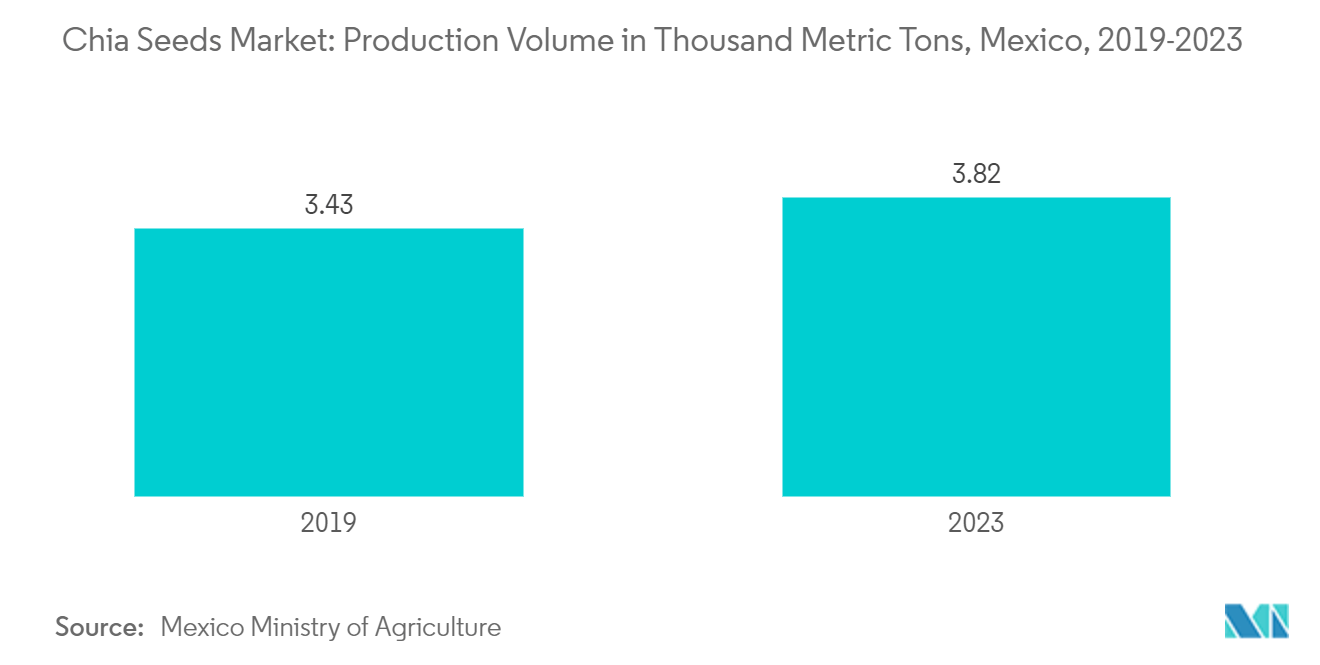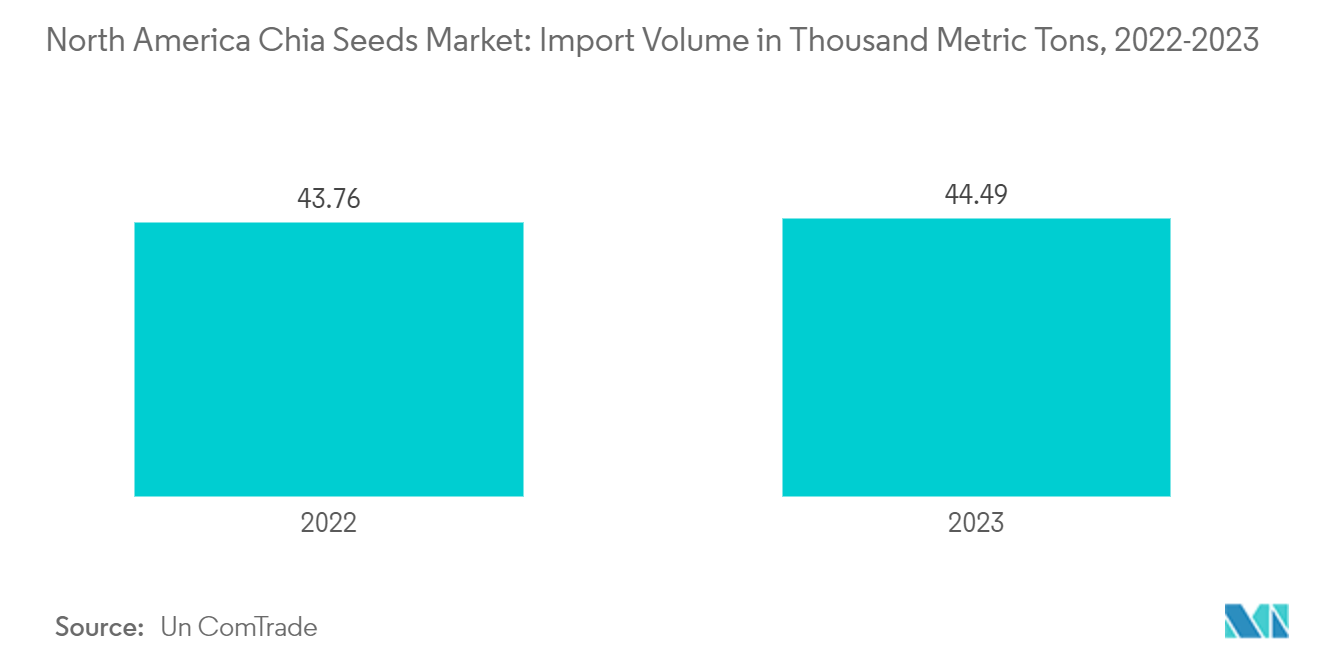Market Trends of North America Chia Seeds Industry
Growing Popularity as a Superfood Drive the production of Chia Seeds
Chia seeds have become a sought-after superfood, fueled by an increasing consumer inclination toward natural and health-focused ingredients. Chia seeds contain high Omega-3 polyunsaturated fatty acids (PUFAs), protein, dietary fiber, and bioactive compounds. This impressive nutritional profile and functional benefits have spurred a significant uptick in demand, leading to their widespread availability in grocery stores in North America. Therefore, chia seed production has surged as demand for chia seeds increased in North America's various countries. For instance, according to the Ministry of Agriculture, Mexico's production of Chia seeds was 3.43 thousand metric tons in 2019, which increased to 3.82 thousand metric tons in 2023.
Besides, while the U.S. and Canada have traditionally relied on imports from countries like Mexico, Argentina, and Bolivia, some farmers in North America are beginning to cultivate chia seeds domestically. States like Arizona and regions in the southern U.S. have favorable climates for chia, and there is increasing interest in local production to reduce reliance on imports.
Chia seeds are incredibly versatile, as they can be used whole, ground, or soaked to create gels, making them adaptable for various types of food products. This versatility has led to their inclusion in numerous food and beverage products like Muesli bars, peanut butter, cereals, and other food products, further increasing their market demand. Consequently, the growing demand for organic and locally produced chia seeds has encouraged North American farmers to explore chia cultivation. This is especially true in areas where there is strong market demand for organic and sustainable products.

United States Dominate the Market
Chia seeds are labeled as superfoods in the United States, and thus, most merchants cite vitamin, mineral, and antioxidant contents on the packages to attract customers. Due to the presence of high protein, omega-3 fatty acid, and fiber content, in the past few years, there has been an increase in the consumption of chia seeds. As such, in the United States, the seeds are being increasingly integrated into the trends of health and food sectors, such as snacks, energy drinks, or aggregate with cereal, which is fueling the market for chia seeds in the country.
The United States produces chia seeds in a minimal amount. The country mainly imports chia seeds from various countries, such as China, Paraguay, Mexico, and Argentina. According to UN Comtrade statistics, in 2023, the United States import of Chia Seeds was 44.49 thousand metric tons from 43.76 thousand metric tons in 2022. As one of the largest producers of chia seeds, Mexico is a key supplier to the United States. The proximity of Mexico to the U.S. helps reduce transportation costs and ensures a steady supply. Mexican chia seeds are popular due to their quality and the country’s long tradition of chia cultivation. Further, Paraguay has become another significant supplier of chia seeds to the U.S. market. The country’s favorable growing conditions, particularly in terms of climate and soil quality, have allowed it to increase chia seed exports.


